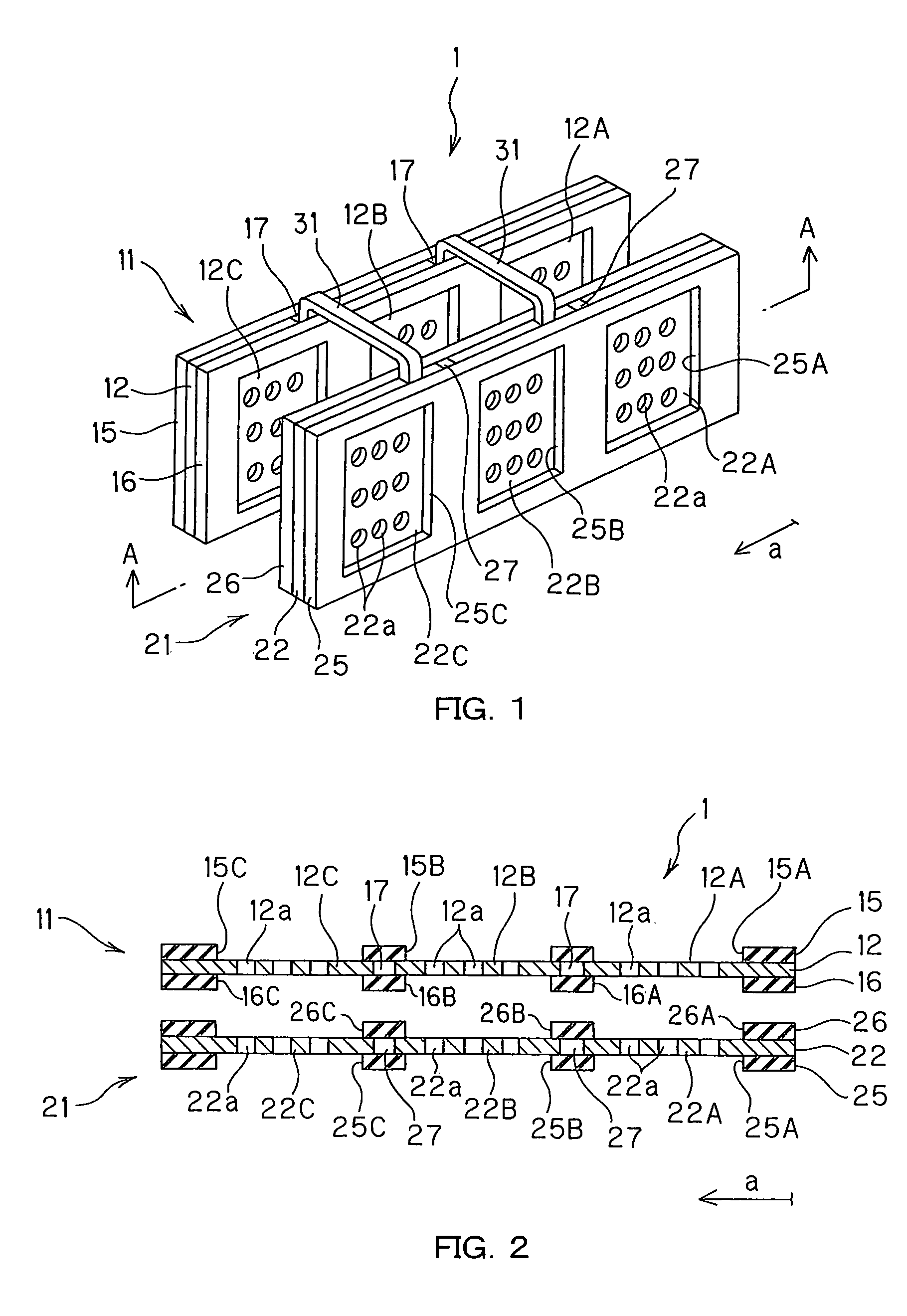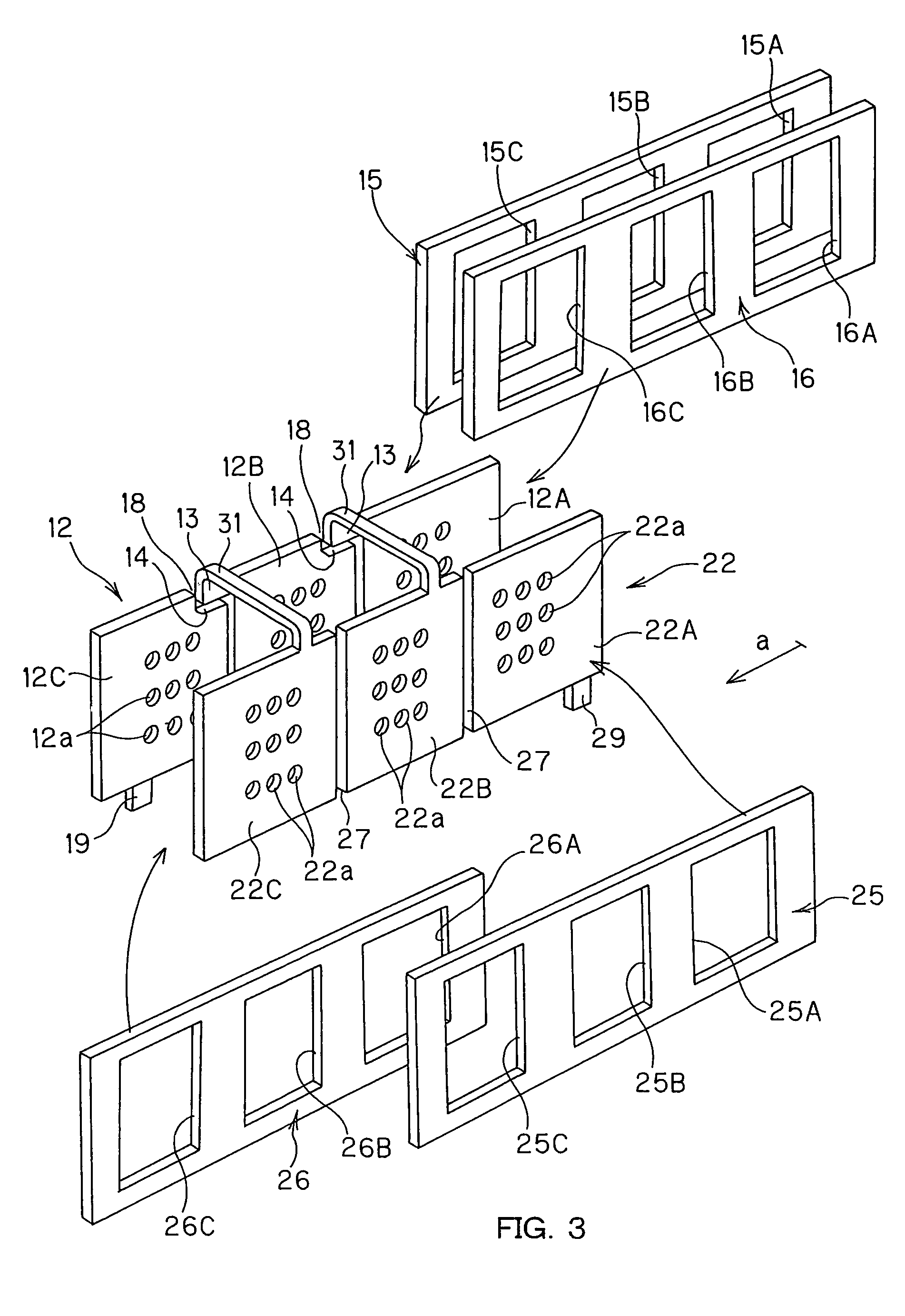Separator for flat-type polymer electrolyte fuel cells
a polymer electrolyte and fuel cell technology, applied in the direction of cell components, cell component details, electrochemical generators, etc., can solve the problems of complex processes, difficulty in forming wires, uneven fuel and oxygen feed from site to site, etc., to achieve high strength and improve power generation capability
- Summary
- Abstract
- Description
- Claims
- Application Information
AI Technical Summary
Benefits of technology
Problems solved by technology
Method used
Image
Examples
Embodiment Construction
[0057]Some embodiments of the invention are now explained with reference to the accompanying drawings.
[0058]FIG. 1 is illustrative in perspective of the separator for a flat-type polymer electrolyte fuel cell according to the invention; FIG. 2 is illustrative in section of the separator depicted in FIG. 1, as taken on an A-A arrow section; and FIG. 3 is illustrative in perspective, as taken apart, of the components forming the separator depicted in FIG. 1. Referring to FIGS. 1-3, a separator 1 for the flat-type polymer electrolyte fuel cell according to the invention comprises a fuel-feed-side separator 11, and an oxygen-feed-side separator 21. For convenience of illustration here, the separator 1 is explained as the fuel-feed-side separator 11 and the oxygen-feed-side separator 21; however, it is understood that they are interchangeable. In FIGS. 1-3, it is also noted that the direction shown by an arrow a is the array direction of the unit conductive substrates to be described lat...
PUM
| Property | Measurement | Unit |
|---|---|---|
| thickness | aaaaa | aaaaa |
| thickness | aaaaa | aaaaa |
| opening diameter | aaaaa | aaaaa |
Abstract
Description
Claims
Application Information
 Login to View More
Login to View More - R&D
- Intellectual Property
- Life Sciences
- Materials
- Tech Scout
- Unparalleled Data Quality
- Higher Quality Content
- 60% Fewer Hallucinations
Browse by: Latest US Patents, China's latest patents, Technical Efficacy Thesaurus, Application Domain, Technology Topic, Popular Technical Reports.
© 2025 PatSnap. All rights reserved.Legal|Privacy policy|Modern Slavery Act Transparency Statement|Sitemap|About US| Contact US: help@patsnap.com



